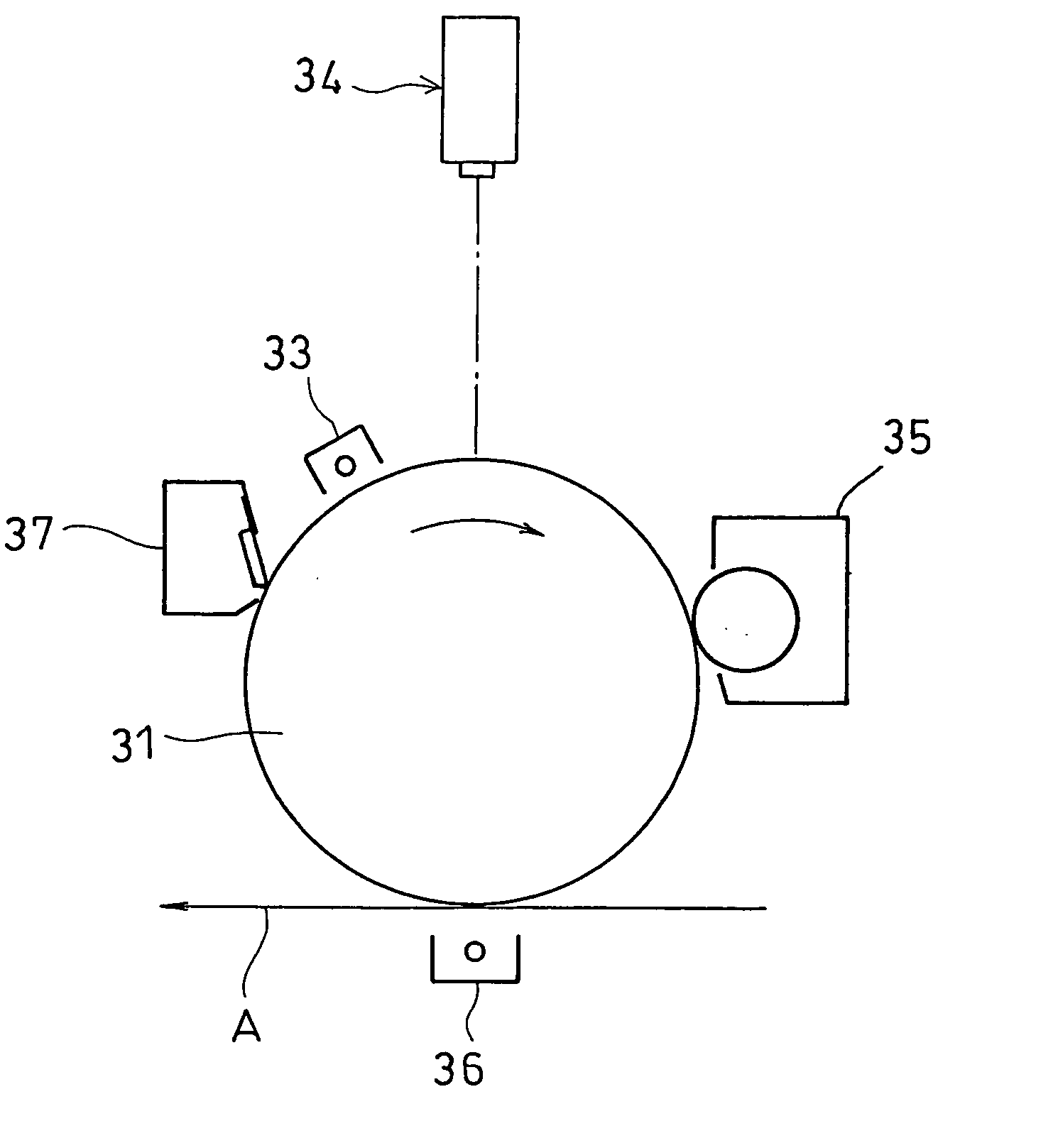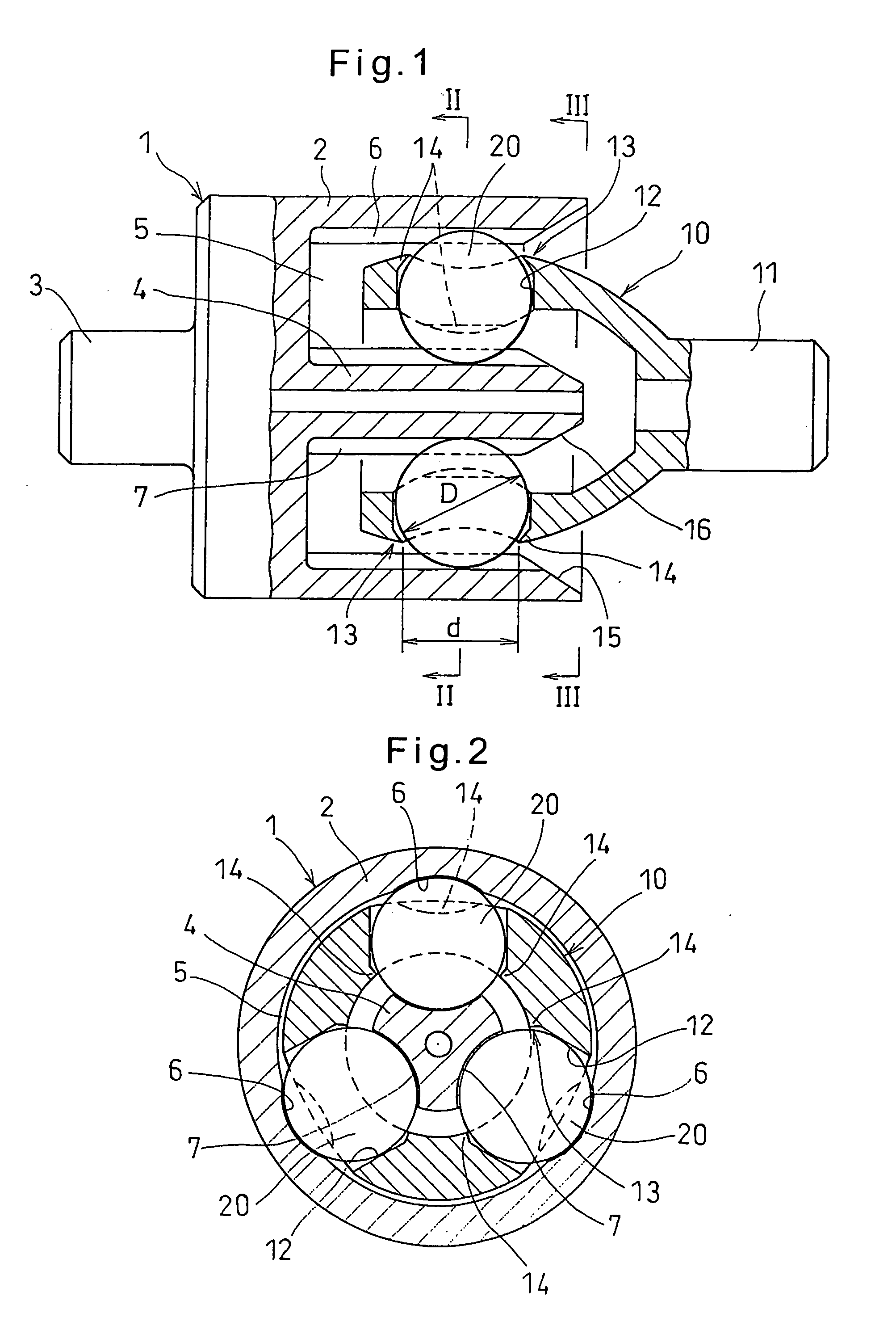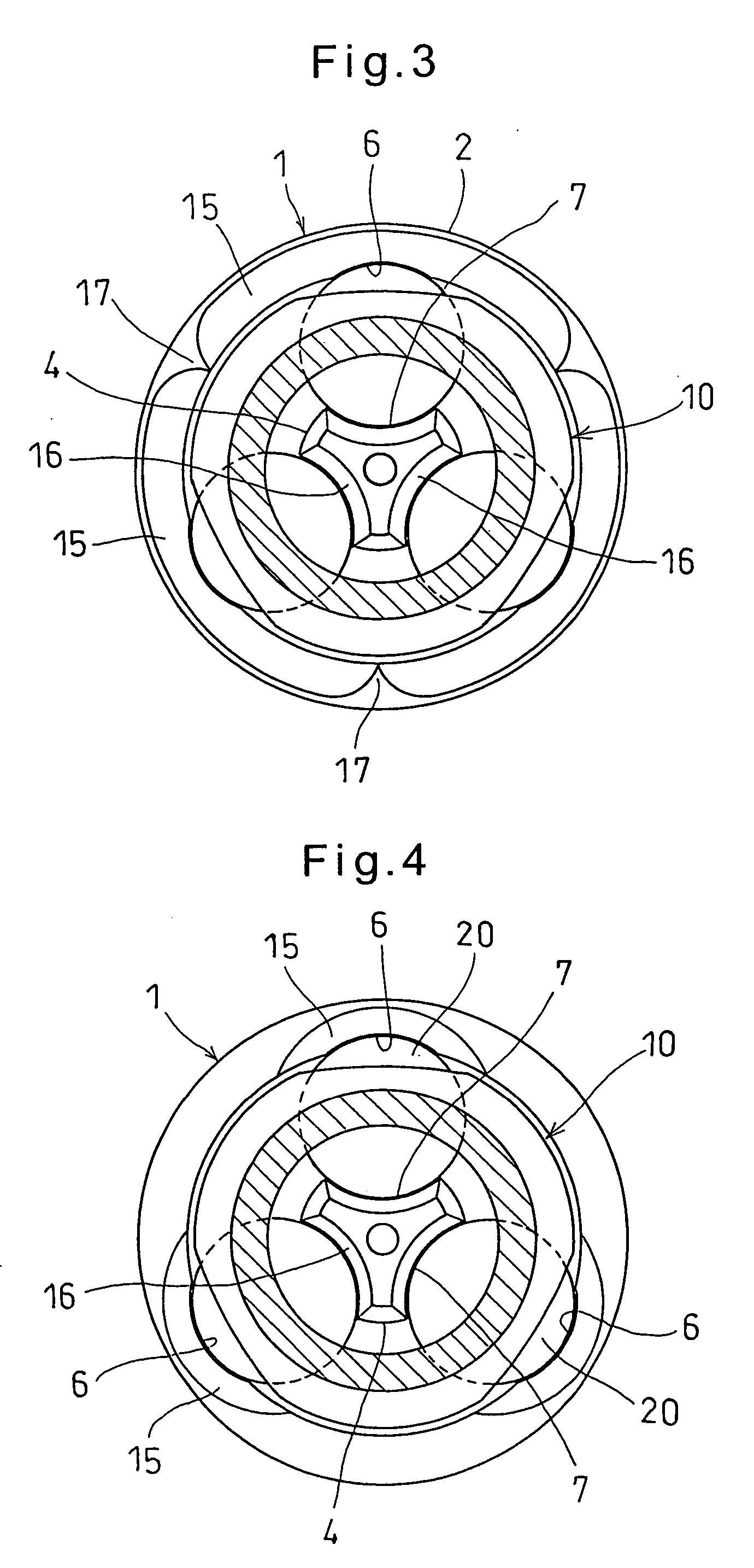Constant-velocity joint and image-forming device
- Summary
- Abstract
- Description
- Claims
- Application Information
AI Technical Summary
Benefits of technology
Problems solved by technology
Method used
Image
Examples
Embodiment Construction
[0035] Now referring to the drawings, FIGS. 1 and 2 show the constant-velocity joint embodying the present invention. It comprises an outer ring 1, a cage 10 and balls 20.
[0036] The outer ring 1 includes a cup 2 having an opening at one end, and an end wall closing the other end thereof. A first shaft 3 is integrally formed on the outer surface of the end wall of the cup 2. A guide shaft 4 extends from the inner surface of the end wall along the axis of the outer ring 1 to define an annular space between the guide shaft 4 and the cup 2. Three track grooves 6 and three track grooves 7 are formed in the radially inner surface of the cup 2, which defines the radially outer wall of the annular space 5, and in the outer surface of the guide shaft 4, which defines the radially inner wall of the annular space 5, respectively. The track grooves 6 and 7 are circumferentially spaced apart from each other at equal intervals of 120 degrees.
[0037] The track grooves 6 or the track grooves 7 may...
PUM
 Login to View More
Login to View More Abstract
Description
Claims
Application Information
 Login to View More
Login to View More - Generate Ideas
- Intellectual Property
- Life Sciences
- Materials
- Tech Scout
- Unparalleled Data Quality
- Higher Quality Content
- 60% Fewer Hallucinations
Browse by: Latest US Patents, China's latest patents, Technical Efficacy Thesaurus, Application Domain, Technology Topic, Popular Technical Reports.
© 2025 PatSnap. All rights reserved.Legal|Privacy policy|Modern Slavery Act Transparency Statement|Sitemap|About US| Contact US: help@patsnap.com



